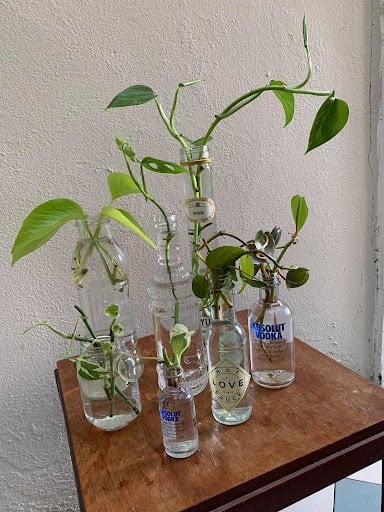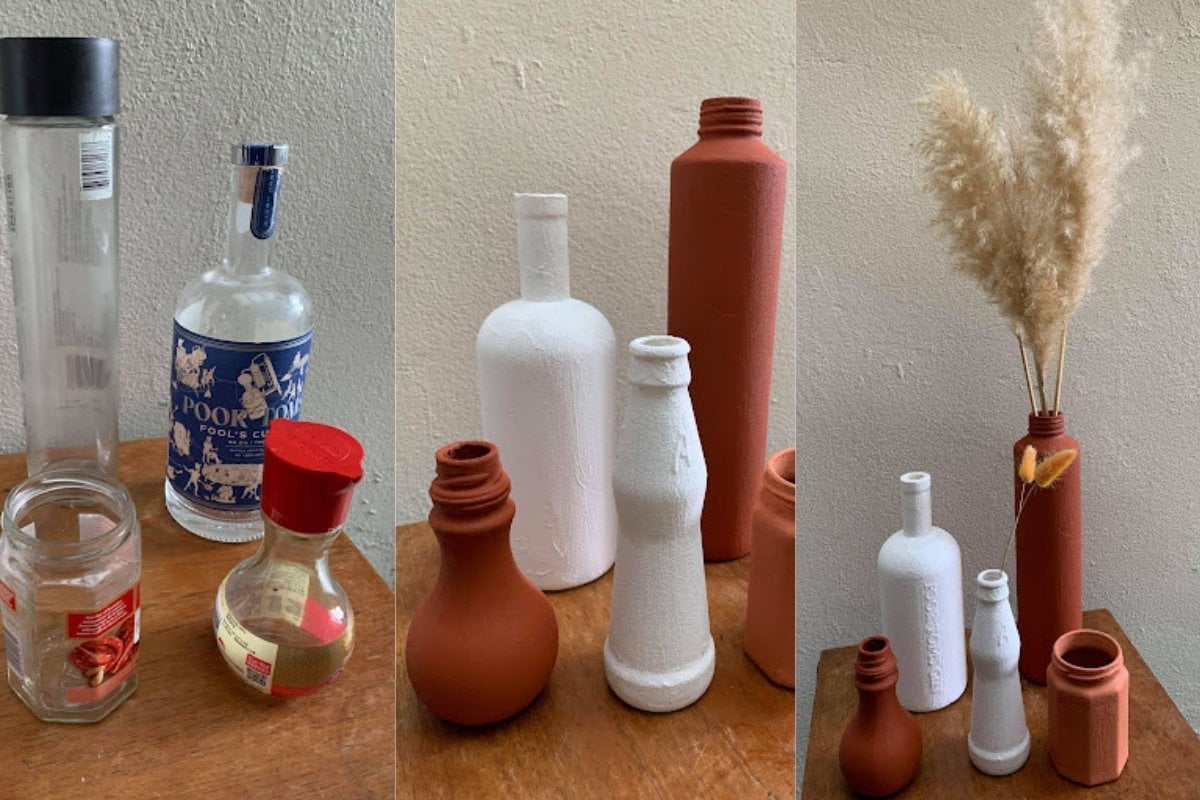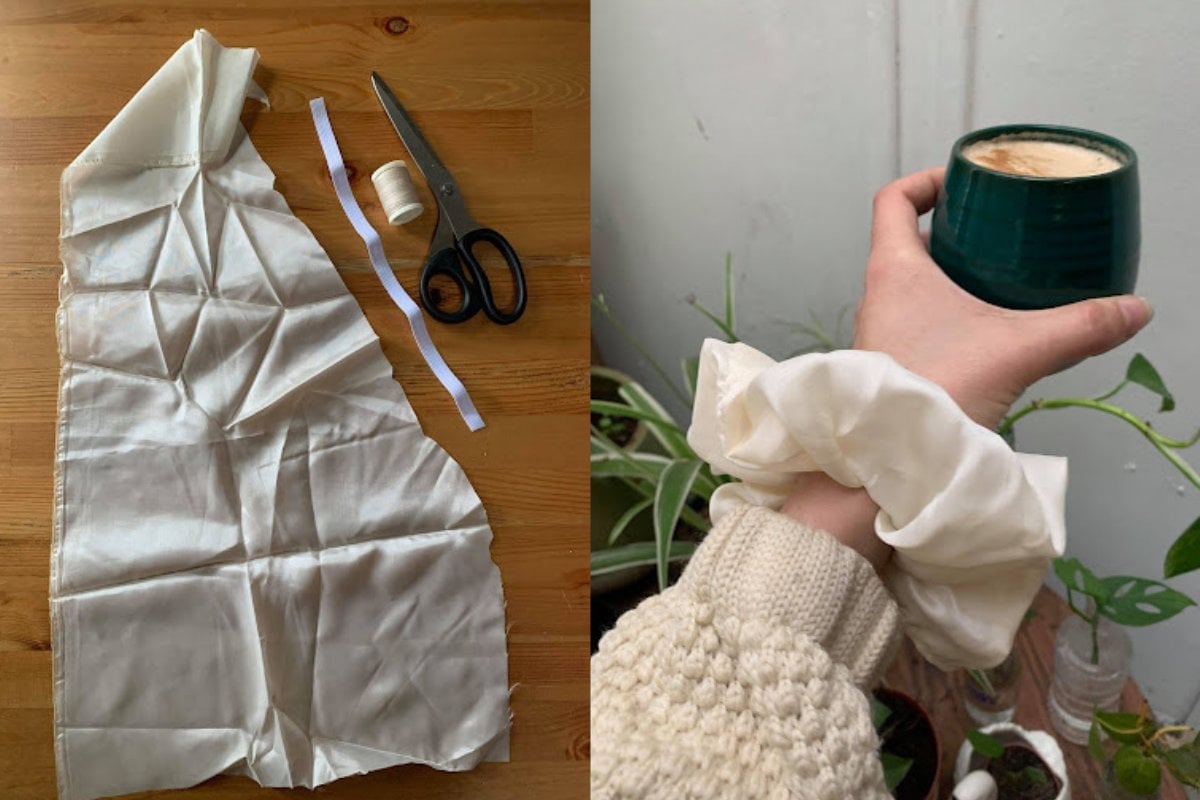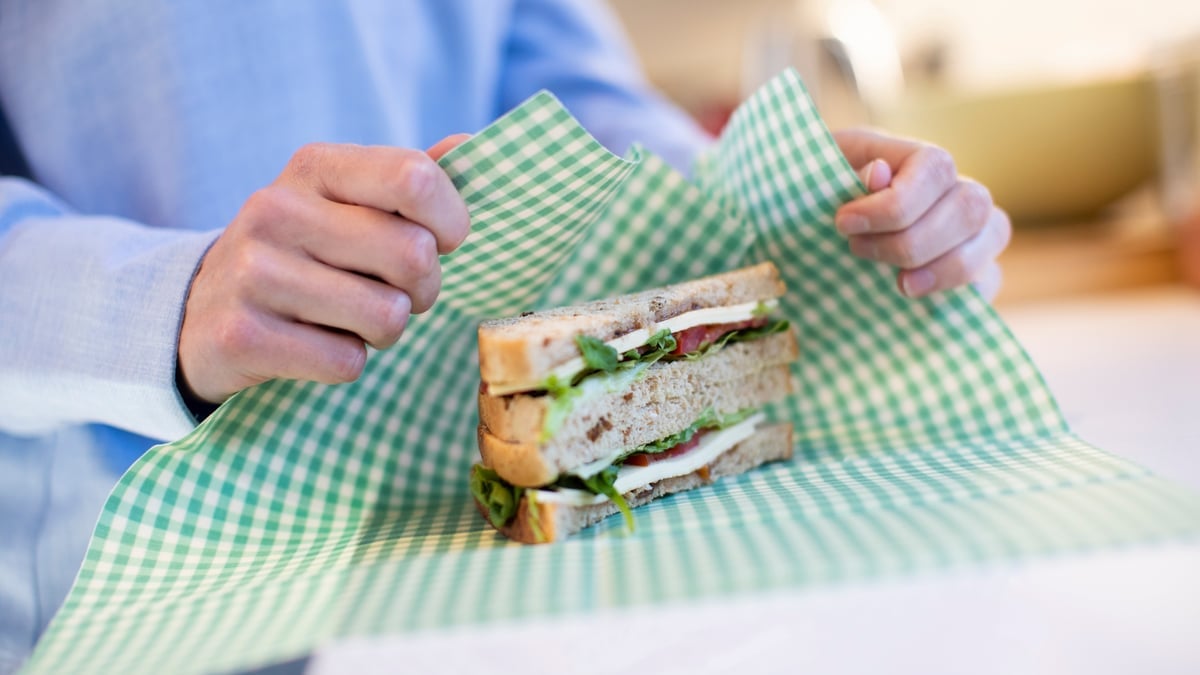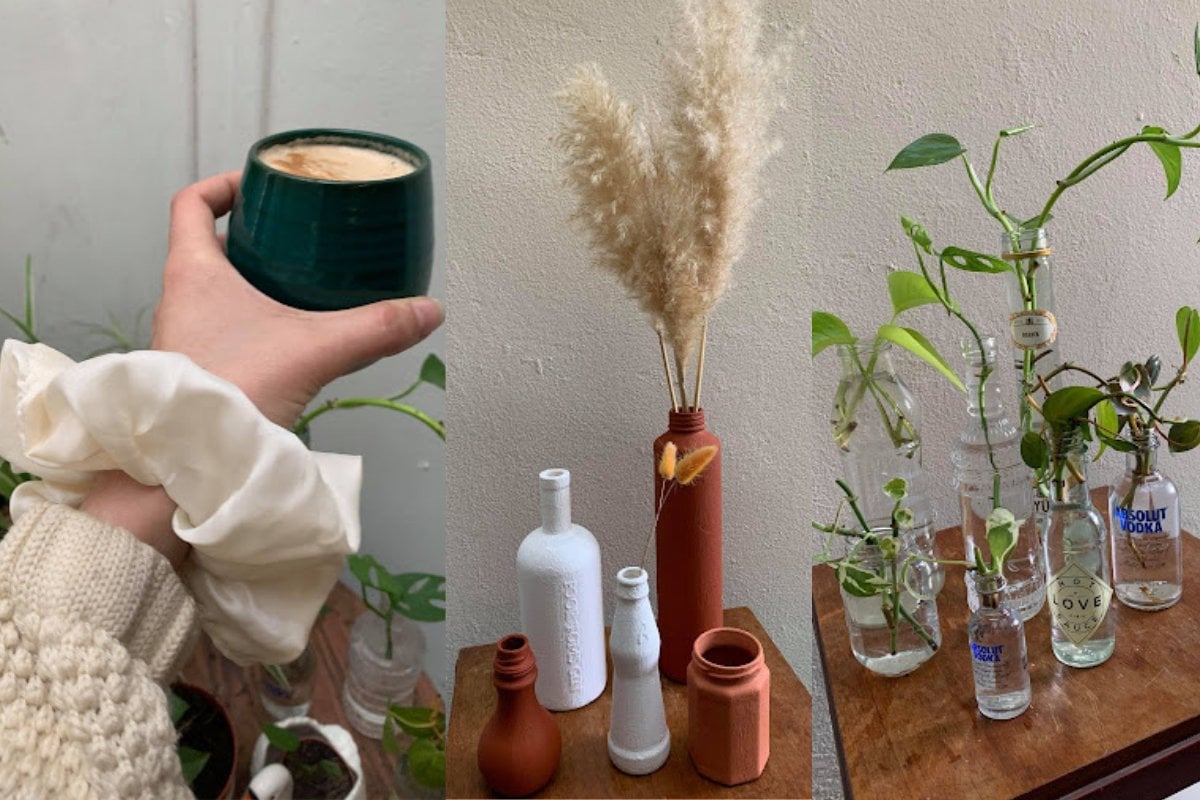
If social media is anything to go by, upcycling and DIY-ing is the hobby of the year. Maybe because we’re all a little more eco-concious, maybe because with lockdowns we’ve had more time on our hands, or maybe because we have more resources and communities to share inspiration and tips.
But before diving into restoring a coffee table or making a recycled tile wall, there are some super easy projects you can do to dip your toe into eco-friendly DIY, that will deliver impressive and social media worthy results.
Watch: 7 eco-friendly habits that aren't so green... Post continues after video.
Plant propagation.
Let’s start with the easiest project. You might have seen ‘plant propagation’ on social media, especially TikTok, with things like propagation walls filling up our feeds. It’s the act of taking cuttings from plants, popping them in water until they grow roots, then replanting them if need be. But no need to get carried away with walls or macrame hangers just yet; propagation can start with a bunch of jars or bottles from around your house, and some cutting from your own plants. Anyone can do it, and it’s basically free!
You’ll need:
- A bunch of different sized jars or containers (glass works best so you can see water levels)
- Cuttings from a few different types of plants, e.g. Pothos (hanging vines), Inch Plant
Firstly, you’ll need to make some cuttings from your plants. Cuttings are basically lopping off leaves or stems from different plants.
Throughout this whole process, you’ll want to have trusty Google on hand to check what parts of your plants to cut, how long to keep them in water and when to replant. Once you have your cuttings, fill your jars with water and pop your cuttings inside. The rule is generally to change the water once a week but again, check on the internet to be sure.

